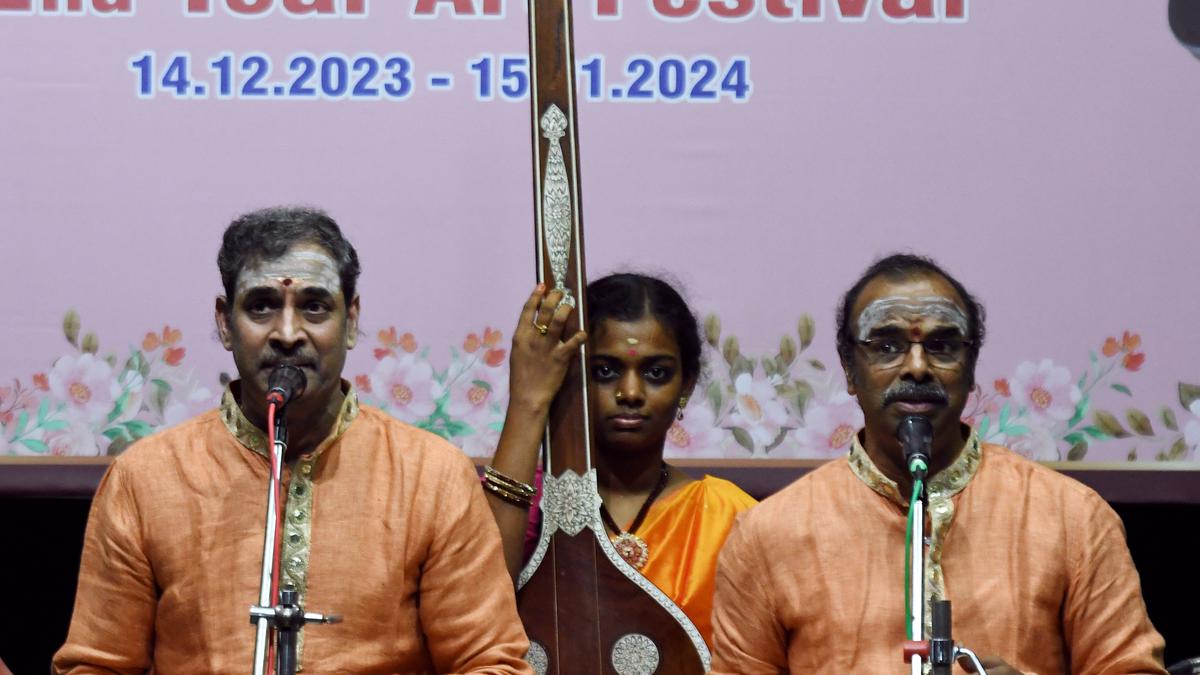
Did Malladi Brothers’s experiment pay off?
The Hindu
Malladi Brothers offered a surprise package
Some senior musicians use the early season concerts for experimentation and even offer some teasers. The Malladi brothers, singing for Mylapore Fine Arts Club, appeared to follow that strategy, with some surprising choices.
The first piece in Kedaram (‘Rama neepai’, Tyagaraja) created a vibrant tempo and atmosphere with the swaras at the end getting the percussionists into the mood of the planned journey. The raga alapana of Sriranjani that followed stayed within the standardised template with regulated imagination. Next was ‘Ini oru ganam unai’ (Papanasam Sivan). The niraval at ‘Ini oru ganam’ was a good highlight in the early segment as was violinist Karthik Nagaraj’s raga alapana with striking jaru slides.
The brothers are known to respect lyrical expressions accurately. The charming ‘Kshitija ramanam’ in Devagandhari (Dikshitar, Adi 2 kalai) was sung in an in-between tempo to keep away any slack in momentum. Then came the first surprise – raga Kantamani, the 61st melakarta. This is rarely an important choice in a major concert. Despite its tricky boundaries, Ravi Kumar sang a fluent raga alapana. ‘Palintuvo palimpave’ (Adi, Tyagaraja) was uneventful, as the raga limitations curbed any creative scope. It underlined the reason for such ragas receiving less consideration in the hands of composers and performers alike. Perhaps, it also created some digression in the tight course that the brothers have so far followed.
‘Marivere gati’ (Ananda Bhairavi, Syama Sastri) is a good panacea for any concert that needs a back-to-the-familiar vibe. The Malladi brothers allowed the full import of this magnificent kriti to flow, with good enunciation and raga lakshanam. This has, perhaps, been rendered a million times over the years, but never ceases to appeal.
The second surprise was Mayamalavagowla being selected to fit the main piece slot. A pleasant raga alapana went beyond the ropes — the longer rendition brought diminishing returns. ‘Devisree’ by Tyagaraja on Goddess Tulasamma is not often heard. It received excellent treatment from the brothers, whose traditional repertoire is their greatest strength. Swaras at ‘Pavani’ with kuraippu was a good canvas in which the accompanists showcased their mettle well.
‘Pooraya mamakamam’ (Bilahari, Narayana Tirtha) was a good contrast to the more sedate Mayamalavagowla kriti. The brothers rounded off their concert with ‘Vishwanatha kasipathe’ in Pahadi, and the beautiful Navarasa Kannada song by Annamacharya (‘Itali kante’) set to music by their grand-guru, Pinakapani with a peppy chittaswaram.
It was obvious that the brothers sought to create various moods in this concert, going by the choice of ragas. A concert that has its pillars rest on Kantamani and Mayamalavagowla, however, will be considered an experiment. The ghana ragas are felt strongly if present, and even more strongly when absent.











